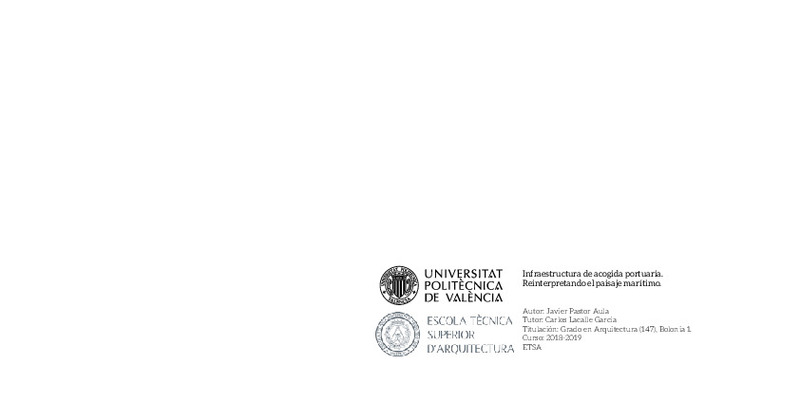- RiuNet repositorio UPV
- :
- Docencia
- :
- Trabajos académicos
- :
- ETSA - Trabajos académicos
- :
- Ver ítem
JavaScript is disabled for your browser. Some features of this site may not work without it.
Buscar en RiuNet
Listar
Mi cuenta
Estadísticas
Ayuda RiuNet
Admin. UPV
Desde el lunes 3 y hasta el jueves 20 de marzo, RiuNet funcionará en modo de solo lectura a causa de su actualización a una nueva versión.
Infraestructura de acogida portuaria. Reinterpretando el paisaje marítimo
Mostrar el registro completo del ítem
Pastor Aula, J. (2019). Infraestructura de acogida portuaria. Reinterpretando el paisaje marítimo. http://hdl.handle.net/10251/117355
Por favor, use este identificador para citar o enlazar este ítem: http://hdl.handle.net/10251/117355
Ficheros en el ítem
Metadatos del ítem
| Título: | Infraestructura de acogida portuaria. Reinterpretando el paisaje marítimo | |||
| Autor: | Pastor Aula, Javier | |||
| Director(es): | ||||
| Fecha acto/lectura: |
|
|||
| Resumen: |
[ES] El presente proyecto tiene como objetivo resolver las necesidades de acogida portuaria como terminal marítima y ofrecer un espacio urbano de carácter público donde convivan pasajeros, turistas y ciudadanos, potenciando ...[+]
[EN] The present project aims at meeting the reception needs of a maritime terminal and at offering a public urban area where passengers, tourists and citizens get together while fostering one of Valencia s cultural ...[+]
|
|||
| Palabras clave: |
|
|||
| Derechos de uso: | Reconocimiento - No comercial - Sin obra derivada (by-nc-nd) | |||
| Editorial: |
|
|||
| Titulación: |
|
|||
| Tipo: |
|
Localización
recommendations
Este ítem aparece en la(s) siguiente(s) colección(ones)
-
ETSA - Trabajos académicos [4899]
Escuela Técnica Superior de Arquitectura








